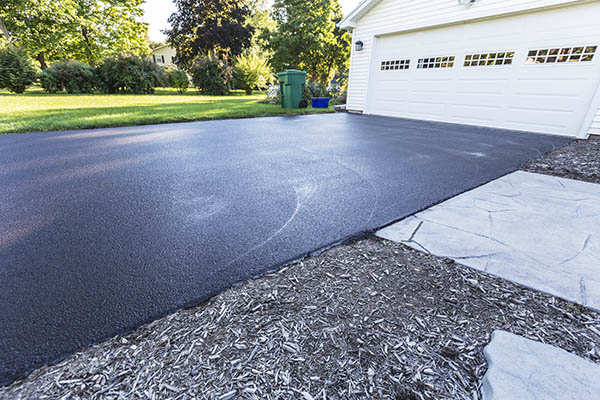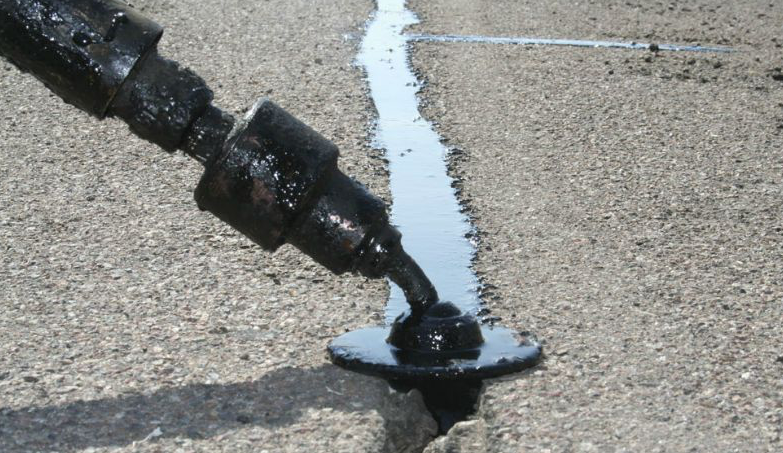Let loose the Potential: Regrading and Asphalt Sealing for Commercial Areas
Let loose the Potential: Regrading and Asphalt Sealing for Commercial Areas
Blog Article
Warm Mix Asphalt: A Sustainable Service for Pavement
Warm Mix Asphalt (HMA) has emerged as a leading lasting option for pavement services, supplying a myriad of cutting-edge technologies and environmental benefits. As the need for environmentally friendly construction methods grows, discovering the nuances of HMA's sustainability can provide useful insights into the future of sidewalk options.
Ecological Benefits of Hot Mix Asphalt

Moreover, Warm Mix Asphalt assists to alleviate urban warm island impacts. Its dark color absorbs sunshine, decreasing the amount of warmth mirrored back into the environment compared to lighter-colored pavements. This can decrease ambient temperatures in metropolitan locations, reducing the need for air conditioning and eventually lowering energy usage.
In enhancement, Hot Mix Asphalt adds to improved stormwater management. Its porous nature enables water to reenergize and penetrate the sidewalk groundwater supplies, minimizing overflow and the threat of flooding. These ecological advantages make Warm Mix Asphalt a lasting selection for leading freeways and roadways.
Energy Effectiveness in HMA Manufacturing
Is power effectiveness an essential factor in the production of Warm Mix Asphalt (HMA)? Absolutely. Power plays a substantial duty in the manufacturing of HMA, influencing both cost and ecological sustainability. One key facet of power performance in HMA manufacturing is making use of cozy mix asphalt (WMA) technologies (regrading). WMA enables the mixing and placement of asphalt at reduced temperature levels contrasted to standard hot mix asphalt, resulting in reduced power usage during production. This procedure not just reduces fuel use however likewise lowers greenhouse gas exhausts, making it an extra eco-friendly option.
In addition, improvements in plant technologies have actually resulted in even more energy-efficient HMA production procedures. Modern plants are created with features like recycled asphalt sidewalk (RAP) processing abilities, efficient burner systems, and improved insulation, all adding to energy cost savings. By enhancing power usage in HMA manufacturing, the industry can lower its carbon footprint while preserving top quality sidewalk materials. Energy performance is, for that reason, a crucial consideration in ensuring the sustainability of Hot Mix Asphalt manufacturing.
Recyclability of Warm Mix Asphalt
The recyclability of Warm Mix Asphalt (HMA) is a critical facet of its sustainability and long-term environmental influence. HMA is one of the most recycled products in the United States, with over 100 million lots of recovered asphalt pavement (RAP) being reused every year in brand-new sidewalk building. Recycling HMA offers a number of ecological benefits, such as lowering the demand for virgin materials, reducing power consumption throughout production, and reducing the quantity of waste sent to land fills.
The procedure of recycling HMA involves crushing the existing pavement, squashing it into smaller sized items, and mixing it with brand-new aggregate and asphalt binder to create a recycled mix. This recycled mix can frequently do as well as or perhaps much better than standard HMA, while needing fewer basic materials and generating reduced greenhouse gas discharges. By integrating RAP into brand-new sidewalk tasks, road companies can preserve natural deposits, decrease prices, and minimize the environmental footprint of road construction and maintenance tasks. On the whole, the recyclability of HMA plays a substantial role in advertising lasting methods within the pavement market.

Long-Term Efficiency of HMA
Asphalt pavements show toughness and strength over an extensive period, showing the lasting performance of Warm Mix Asphalt (HMA) Furthermore, improvements in HMA modern technology, such as the use of polymer-modified binders and warm mix asphalt, have additionally boosted the resilience and longevity of HMA pavements. By prioritizing top quality building and click resources construction and maintenance practices, HMA continues to confirm itself as a lasting and economical option for resilient pavement facilities.

HMA: Toughness and Sustainability
Showing both sturdiness and sustainability, Warm Mix Asphalt (HMA) has actually become a foundation in the building and construction of lasting pavement frameworks - regrading. HMA's resilience originates from its capacity to stand up to hefty loads, rough weather, and high web traffic quantities, making it a reputable option for roadways, freeways, and airport terminal runways. The composition of HMA, which generally includes accumulations, binder, and filler, plays an essential function in boosting its long life and resistance this link to deterioration
Additionally, HMA's sustainability depends on its recyclability and energy-efficient manufacturing procedure. The capacity to recycle recovered asphalt sidewalk (RAP) in new HMA mixes minimizes the demand for virgin materials and decreases the environmental impact of pavement building and maintenance. In addition, the energy efficiency of creating HMA depends on its reduced blending temperatures compared to other pavement products, leading to decreased energy consumption and greenhouse gas discharges.
Conclusion
In final thought, hot mix asphalt (HMA) offers a lasting remedy for pavement with its ecologically friendly qualities. HMA's recyclability, energy effectiveness in production, and long-lasting resilience make it an eco-friendly option for roadway building and construction. By preserving natural deposits, reducing waste, and reducing greenhouse gas exhausts, HMA plays an important function in advertising sustainability in facilities advancement. Its ability to minimize metropolitan warmth island results better emphasizes its significance in producing eco conscious and resilient pavement systems.
HMA is one of the most recycled products in the United States, with over 100 million lots of reclaimed asphalt pavement (RAP) being reused every year in new sidewalk construction.The process of reusing HMA includes milling the existing sidewalk, crushing it into smaller sized pieces, and mixing it with new accumulation sites and asphalt binder to produce a recycled mix.Asphalt pavements show longevity and resilience over an extended period, showing the long-term efficiency of Hot Mix Asphalt (HMA) Additionally, innovations in HMA technology, such as the use of polymer-modified binders and cozy mix asphalt, have further enhanced the longevity and long life of HMA pavements. The capacity to reuse reclaimed asphalt sidewalk (RAP) in brand-new HMA mixtures reduces the demand for virgin products and reduces the environmental impact of pavement construction and upkeep.
Report this page